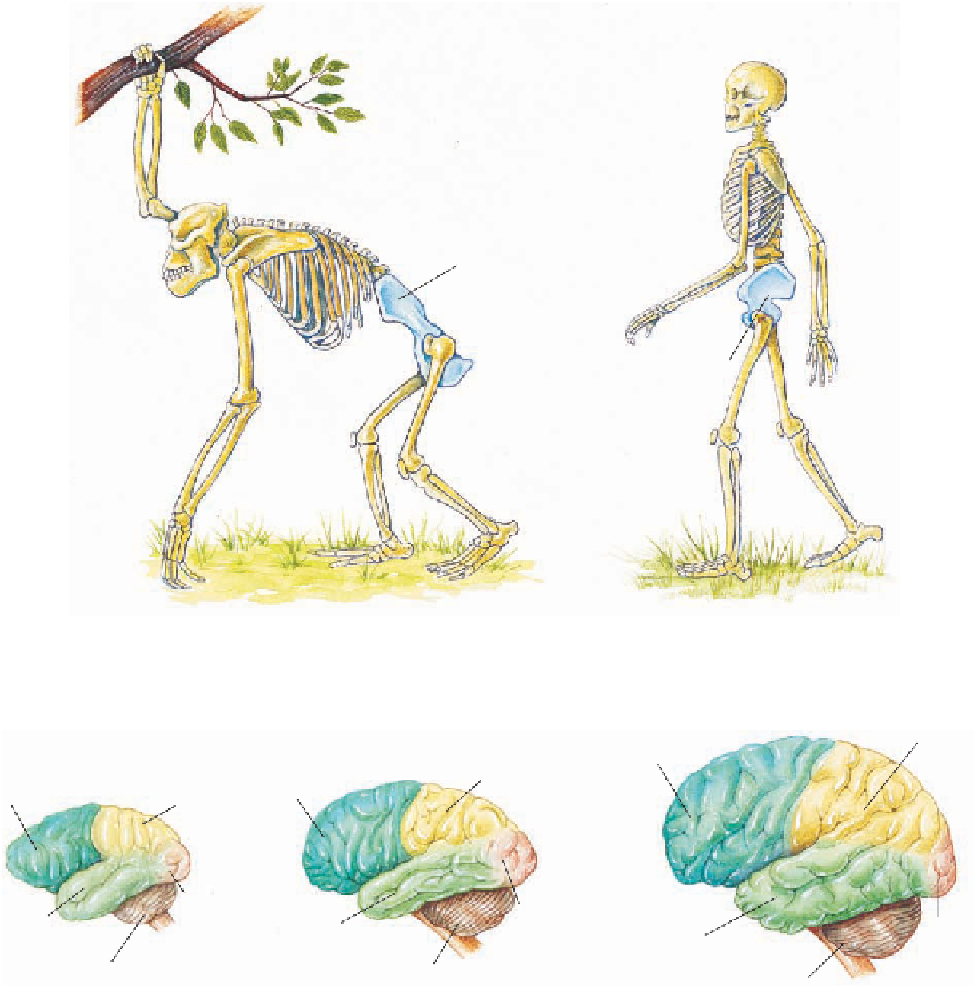Geology Reference
In-Depth Information
◗
Figure 23.30
Comparison of Gorilla and Human Locomotion and Hominid Brain Size
Ischium
Ischium
Gorilla
Human
a
In gorillas, the ischium bone is long, and the entire pelvis is tilted toward the horizontal.
In humans, the ischium bone is much shorter, and the pelvis is vertical.
Parietal
Frontal
Parietal
Frontal
Frontal
Parietal
Occipital
Occipital
Temporal
Occipital
Temporal
Temporal
Cerebellum
Cerebellum
Cerebellum
New World Monkey
Great Ape
Human
b
An increase in brain size and organization is apparent in comparing the brains of a New World
monkey, a great ape, and a present-day human.
years ago). Both were about the same size and weight (1.1-
1.4 m tall and 32-49 kg).
A. robustus
had a fl at face, and the
crown of its skull had an elevated bony crest that provided
additional area for the attachment of strong jaw muscles
(
ago.
H. habilis
evolved from the
A. afarensis
and
A. africanus
lineage and coexisted with
A. africanus
for approximately
200,000 years (Figure 23.31).
H. habilis
had a larger brain
(700 cc average) than its australopithicine ancestors, but
smaller teeth. It was about 1.2-1.3 m tall and only weighed
32-37 kg. The evolutionary transition from
H. habilis
to
H. erectus
appears to have occurred in a short period of time,
between 1.8 and 1.6 million years ago.
In contrast to the australopithecines and
H. habilis,
which
are unknown outside Africa,
Homo erectus
was a widely distrib-
uted species, having migrated from Africa during the Pleistocene.
Specimens have been found not only in Africa, where it evolved
Figure 23.35). Its broad, fl at molars indicated that it was a
vegetarian.
Most scientists accept the idea that the robust australo-
pithecines form a separate lineage from the other australo-
pithecines that went extinct 1 million years ago.
◗
The Human Lineage
The earliest member of our own
genus
Homo
is
Homo habilis,
who lived 2.5-1.6 million years



Search WWH ::

Custom Search